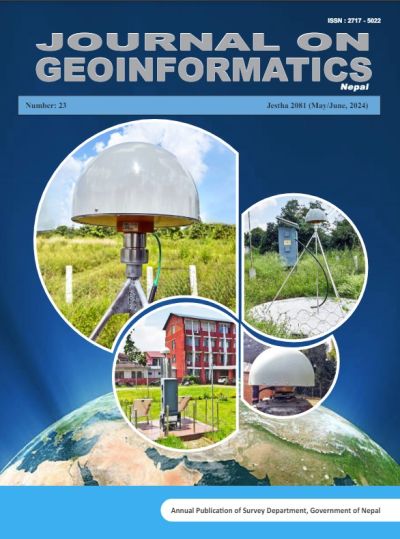Landslide Susceptibility Analysis and Hazard Zonation in Nuwakot District, Nepal
DOI:
https://doi.org/10.3126/njg.v23i1.66097Keywords:
Bivariate analysis, Frequency ratio, Entropy index, Landslide susceptibility analysisAbstract
Landslide mostly occurred in highly rugged topography, erosional steeply sloping land form and fragile geological structural in mountainous region. Landslide susceptibility describe the likelihood relation of occurring landslide in an area controlled with their local terrain condition. Landslide susceptibility analysis (LSA) work is used to determine the spatial distribution of landslides prone area and applicable to predict the future landslides occurrences, which is vital for averting and mitigating regional landslide disasters. LSA. In this study, LSA is carried with the bivariate analysis incorporating twelve causative factors of landslide. The frequency ratio (FR) technique were used for computing the relative frequency (RF) as priority rank and entropy index (E) as weight of causative factor. Result of LSA shows that the probability of occurring landslides is 80 percent, with 27 percent of that risk being high risk, 38 percent being medium risk, and 15 percent being low risk. The prediction accuracy of the model is 87.89 percent, showing reliable and satisfactorily validation rates with good accuracy. So, the present study demonstrates that the quantitative assessment methods explored may have a promising potential for landslide assessment and prediction in the high hill and Himalaya regions.




